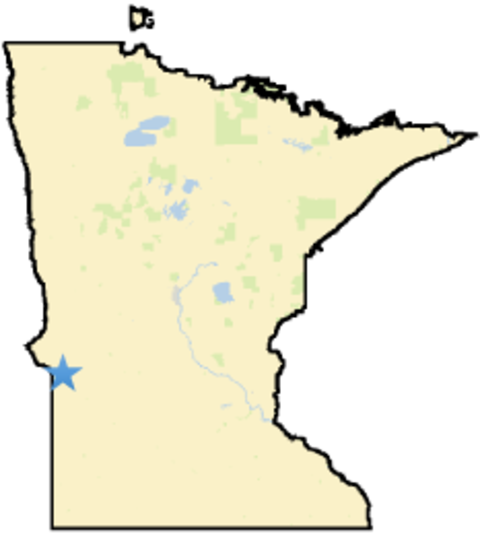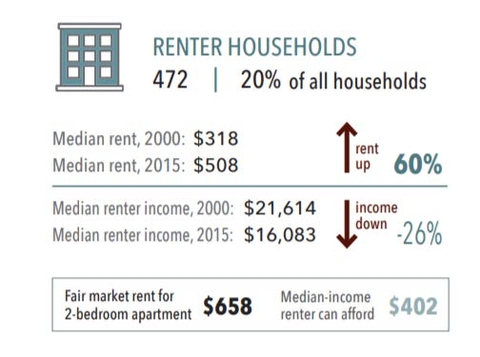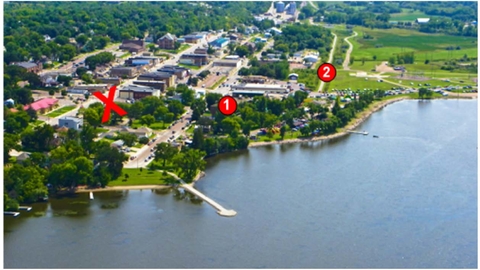EDA meets need for senior housing and looks to workforce
Core housing issues addressed
- Senior housing
- Workforce housing
Housing challenges
Like many communities with aging residents, the City of Ortonville (population 1,930) has focused on supplying a mix of housing to retain its seniors. The initiative is part of a wider vision to recruit residents through quality of life amenities and develop workforce housing. Senior housing developments open housing for new residents and senior workers.
The Ortonville Economic Development Authority (EDA) used the city’s bonding ability to develop its initial senior housing complex. The EDA then worked in conjunction with its municipal health care facility to expand the facility into a larger senior housing development complex. The complex is now under the management of the municipal health care organization. Building off this success and the area’s regional marketing initiative, MNbump, community leaders created a plan to develop workforce rental housing to help ease the current worker shortage and welcome new families.
Community profile
As the county seat and largest community in Big Stone County, Ortonville is the area hub near Big Stone Lake, which is along Western Minnesota’s geographic ‘bump’. With a greater percentage of its residents over 65 than the state in general (26 percent and 14 percent, respectively), the current aging population is of concern (Figure 2).
According to the Minnesota Housing Partnership’s 2017 profile of Big Stone County, 16 percent of households in the county are cost burdened, meaning they pay more than 30 percent of their income toward housing. With a median renter income of $16,083, the challenge of providing affordable housing is great.
(Source: Minnesota Housing Partnership)
Rental rates have continued to increase while renter incomes have decreased since 2000 (Figure 3). A recent business owner survey in Big Stone County (70 percent of respondents were in Ortonville) confirmed the need to address housing, particularly rental housing. After spousal employment and daycare, rental housing was the third most important priority for recruiting and retaining employees. And, with a greater number of workers commuting into Ortonville rather than out, the community has an opportunity to transition existing workers into residents. At the county level, however, more workers travel outside Big Stone for work rather than enter it (U.S. Census, On the Map, 2017).
Housing success story
The Ortonville EDA and its community partners have undertaken three separate, yet interrelated, projects that affect housing in the city.
Its MNbump regional marketing campaign highlights the quality of life in the Big Stone area to recruit new residents and workers to the region. Started in 2015 by Big Stone Area Growth (BSAG), a public-private economic development organization, the idea grew out of a University of Minnesota Extension tourism assessment program. Four community bloggers across the county and one BSAG staff person showcase community events, amenities, and residents through online videos, stories, and social media posts (Figure 4).
In 2017, the City of Ortonville and Ortonville Area Health Services (a municipal hospital and clinic) completed a $9.2 million expansion of the Fairway View Communities (Figure 5).
The Ortonville EDA developed the original facility in 2004, which included 12 independent, 16 assisted living, and six memory care units. Local demand for units, and the opportunity to build on an already successful facility, pressed the City of Ortonville to expand its current facility on the picturesque grounds near the municipal golf course (Figure 5). The 2017 expansion added a 51-bed nursing home complex and 34 catered living units. The facility was filled to capacity even before its grand opening ceremony and open house. Ortonville Area Health Services manages the facility and holds a long-term lease with the Ortonville EDA on the original complex.
A team of community leaders is also developing a plan for rental workforce housing through the Minnesota Housing Partnership’s Housing Institute. The team used its connection with the Housing Institute to investigate the feasibility of the project and to identify financial resources for its development (Figure 6).
Planners of the proposed 12-unit apartment complex (which includes eight two-bedroom and four three-bedroom units) await the findings from a housing study by Maxfield Research. Upon receiving the results, project partners will adjust the scope of the project accordingly and find a developer to own and manage the complex. The estimated cost is $1.2 million. The project would be a joint effort between the City of Ortonville, the Ortonville EDA, and the developer. The Housing Institute team has already identified incentives that may be available through the City of Ortonville and/or the Ortonville EDA and local businesses. They include the following:
- Location within the city’s scattered tax increment financing (TIF) district
- Land acquisition
- Long-term rental guarantee on two (or more) units
- Utility rebates for a to-be-determined length of time
Programs and financial resources
The City of Ortonville issued a municipal bond to finance the $9.2 million expansion at Fairway View Communities. The land was already owned and managed by the city and properly zoned for the expansion. No other programs or financial resources were used for the project.
Who can you follow-up with to learn more or to clarify housing project details?
Vicky Oakes, economic development director, Ortonville EDA
Phone: 320-839-6155 | Email address: vicki@ortonvilleeda.com
- Interview with Vicky Oakes, September 2018.
- U.S. Census Bureau. (n.d.). On the Map, 2017.
- Minnesota Housing Partnership. (n.d.). 2017 county housing profile: Big Stone County.
About the MN Rural Housing study
Small rural communities in Minnesota face persistent housing challenges. In 2017, the state’s regional development organizations (RDOs) identified housing as a top learning focus and called for the creation of case studies that highlight creative solutions to persistent housing issues confronting our smaller communities. This project is a collaboration between the Extension Department of Community Development and the Center for Small Towns.
Reviewed in 2018






